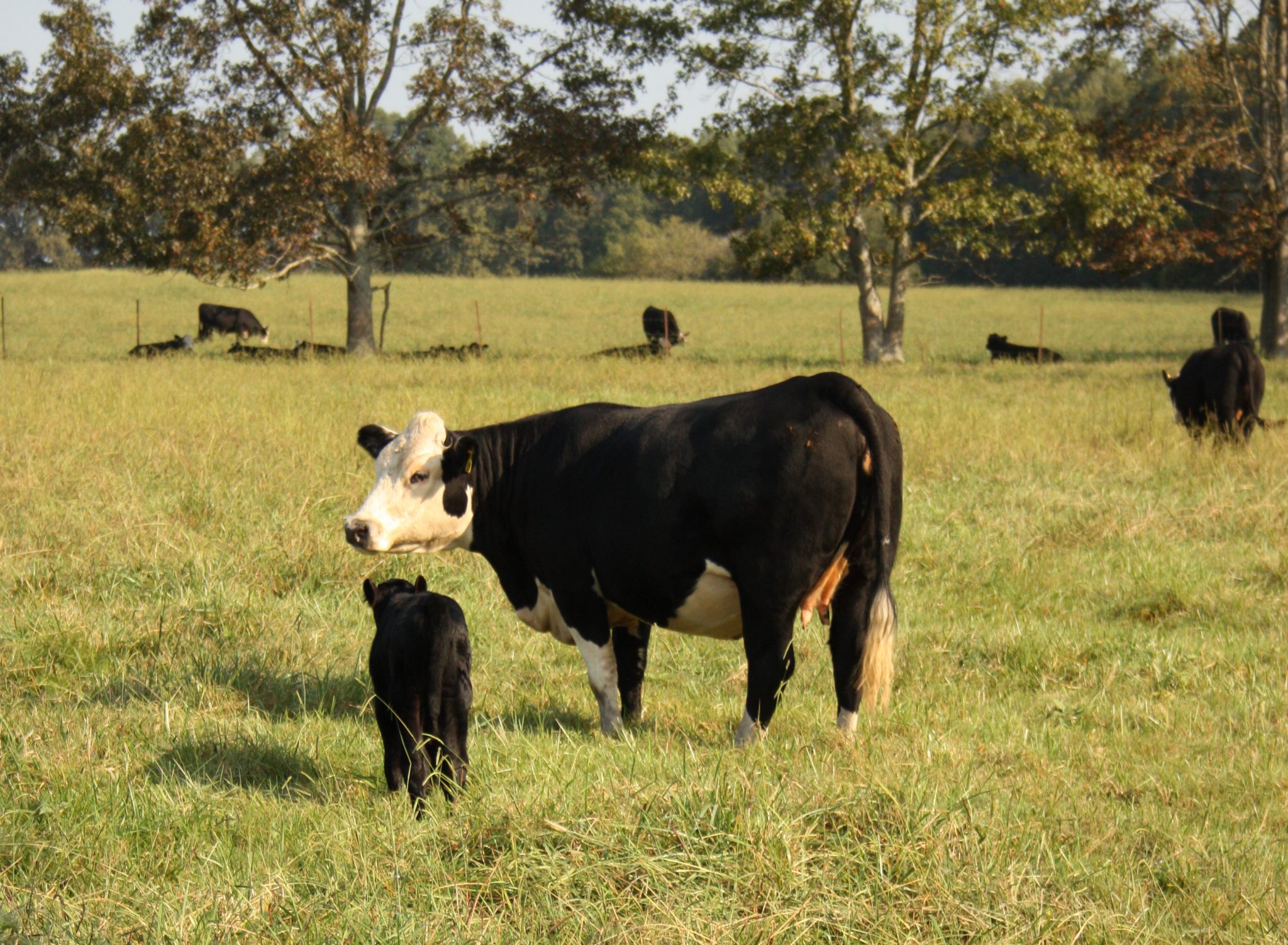Beef

The success of a beef cow-calf operation depends upon the number of calves produced and marketed each year. Fewer calves to market will reduce income. Therefore, reproductive success is extremely important. Proper management of nutrition, herd health, and accurate record keeping are all vital contributions that can impact reproduction. General reproductive goals for a cow-calf operation should include the following:
- Calving during the intended defined calving season of 60 to 90 days or less
- Reaching high pregnancy and calving percentages and an optimal average calf weaning weight for the herd
- Maintaining cows who consistently produce a calf each year and strive for a high percentage of calves born in the first half of the calving season
Reproductive Management for Successful Performance
Proper nutrition is vital. Insufficient nutrition can result in suppressed fertility, lower pregnancy percentages, and delayed breeding in beef females.
Develop replacement heifers at an ideal growth rate of 1.0 to 1.5 pounds per day from weaning to breeding. A heifer’s first breeding should be timed for when she reaches 65% of her mature body weight so that she will calve at 2 years old. Producers should plan to breed heifers about 20 to 30 days before mature cows. This provides a longer time window to closely monitor first-calf heifers for adequate nutrition and more time to successfully rebreed.
For mature cows, nutritional needs are at their greatest at the time of peak milk production, about 60 days post-calving. During this time, cows are also preparing to enter the breeding season. Cows need to maintain a body condition score of at least 5 entering the breeding season to successfully rebreed. If cows do not receive adequate nutrition after calving, fertility will be suppressed with lower pregnancy percentages and delayed breeding to extend the calving season.
A comprehensive herd health program is critical. Vaccination programs are designed to protect animals from diseases. Infectious diseases can result in reproductive problems. Producers should establish a working relationship with their veterinarian to develop a complete herd health program.
Breeding soundness exams of both replacement heifers and bulls is extremely effective. A heifer breeding soundness exam is used to evaluate reproductive potential. These exams allow for retaining reproductively sound heifers and culling unsound heifers. An annual bull breeding soundness exam (BSE) assesses a bull’s ability to sire a high percentage of calves within a defined calving season. Producers should perform bull BSEs at least 60 days before each breeding season. This allows time for any unsatisfactory bulls to be replaced and any deferred bulls to be reexamined.
Metrics for Whole-herd Reproductive Performance
Whole-herd record keeping provides an overall assessment of reproduction. After the breeding season, producers should determine the pregnancy status of the herd. After the pregnancy status has been determined, pregnancy percentage can then be calculated as a first indication of reproductive efficiency. After the calving season, producers can calculate a calving percentage to provide an appraisal of calf death loss because of any calving or reproductive health problems. (See the Alabama Extension publication Beef Cattle Record Keeping Basics.)
A calving distribution is also useful to see when most calves were born. To do so, record the date when the first calf was born. At the end of the first 21 days of calving, count and record the number of calves born. Continue counting and recording the number of calves born within each additional 21-day calving period. Determine your calving distribution by reviewing the number of calves born in each 21-day period of the calving season. It is ideal for a high percentage of calves to be born in the first half of the calving season to be more efficient. Cow herds with a lower percentage of calves born in the first half of the calving season are less efficient. (See the Alabama Extension publication Managing and Measuring Reproduction in the Beef Cow Herd.)
Metrics for Individual Animal Reproductive Performance
Individual animal record keeping provides precise evaluation of reproductive performance over multiple breeding and calving seasons. A cow’s performance can be measured by average calving interval. An ideal average calving interval is 370 days or less and will increase if a cow has missed or lost a calf. Cows with an average calving interval value of 370 days or less are efficient, and cows with high value calving intervals are less efficient and should be culled.
Another individual animal metric is the Most Probable Producing Ability (MPPA) ratio. MPPA is a ratio for an impartial in herd comparison of cows of various ages and number of calves. MPPA is an estimate to predict future productivity based on past performance within a herd, with a ratio value of 100 to represent the herd average.
Collectively evaluating all individual reproductive metrics is the most effective way to improve reproductive performance. Analyzing the average calving interval, the MPPA value, and the calf average 205-day adjusted weaning weight will fully reveal a cow’s complete performance so producers can make sound management decisions. (See the Alabama Extension publication Managing and Measuring Reproduction in the Beef Cow Herd.) Culling cows who do not perform allows for concentration of available resources for cows who do perform.
More Information
Reproductive performance is significant for success in beef cattle production. To be productive and efficient in reproduction, proper management and record keeping is crucial. The Alabama Beef Cattle Improvement Association (BCIA) provides an Internet-based, specialized record keeping system. For more information, contact Alabama BCIA at www.albcia.com.

